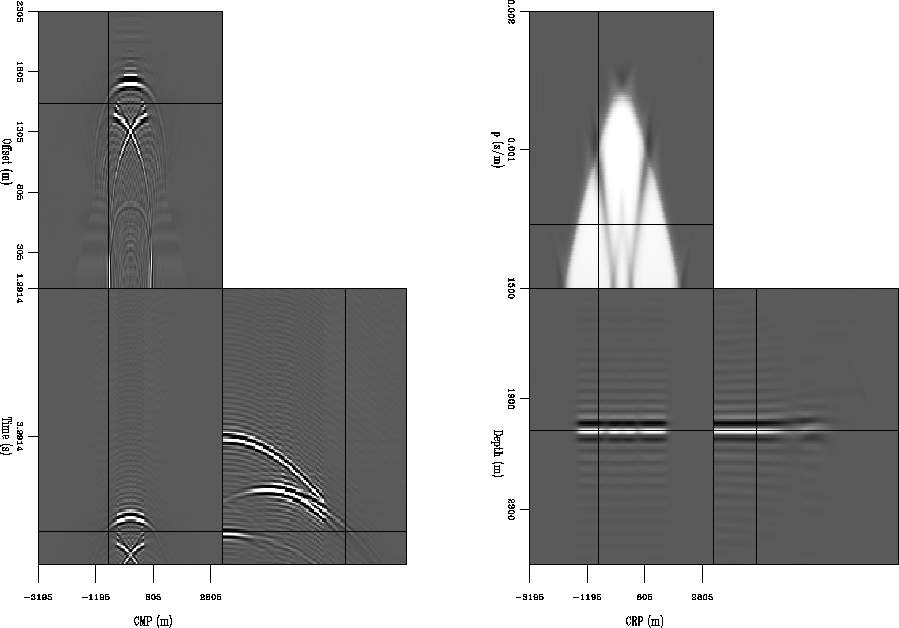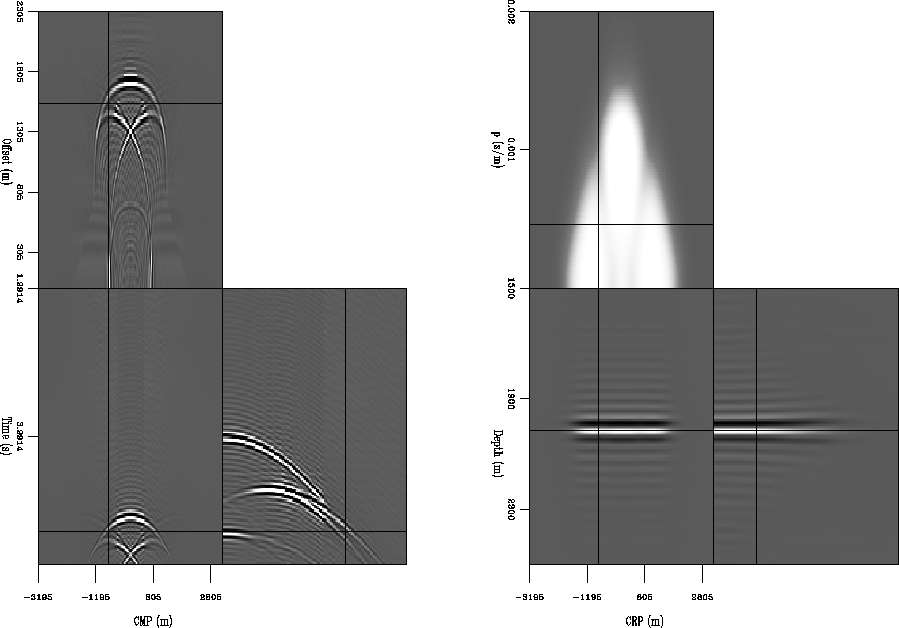 |
Figure 3 Left: Data space after 3 iterations of geophysical RIP. Right: RIP result after 3 iterations.
To see how RIP affects the data space, I first ran 3 iterations of RIP with geophysical regularization. The resulting image (right panel of Figure 3) shows that the shadow zones are beginning to fill in. The data space corresponding to this model (left panel of Figure 3) shows that we now have energy extending outside of the original data (left panel of Figure 2). This ``recovered'' data has lower amplitude than the recorded data, but theory suggests that with more iterations it would become similar in amplitude.
 |
I also ran 3 iterations of RIP with geological regularization. This result (right panel of Figure 4) shows that the shadow zones are almost completely gone. The corresponding data space (left panel of Figure 4) has extended events with almost the same amplitude as the original data. The similarity in amplitude after only 3 iterations is due to the use of regularization along ph and in the CRP-depth plane. In cases where the reflectors used to create the steering filter are easily interpreted, as for this simple example, geological regularization will provide a better image faster than geophysical regularization.
 |